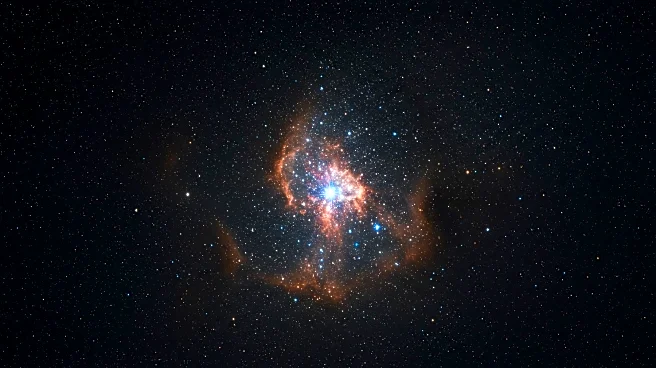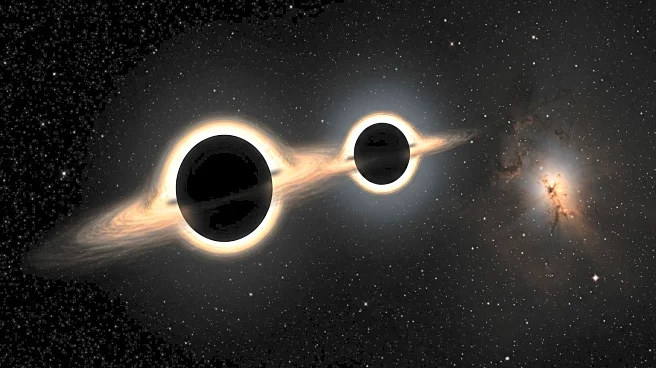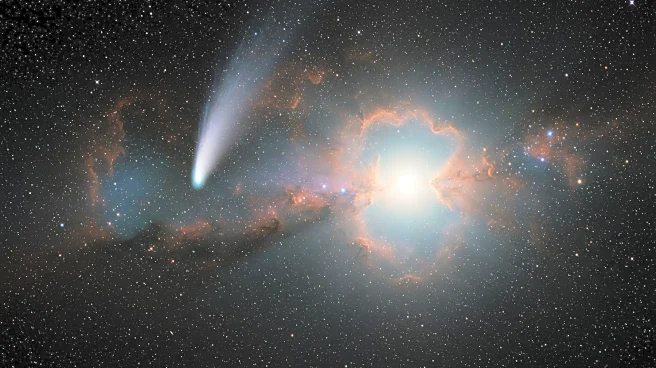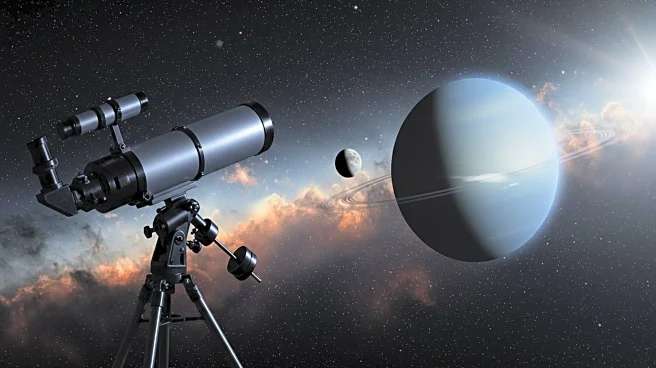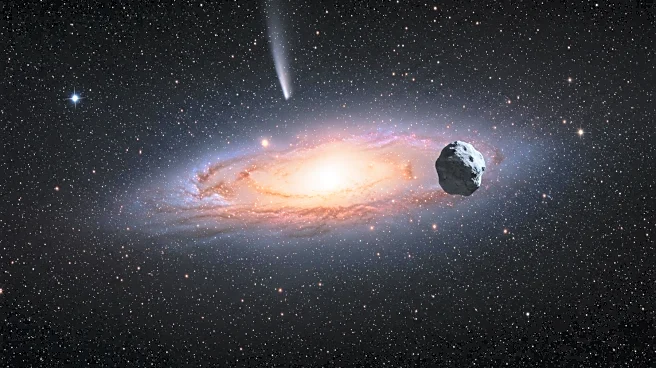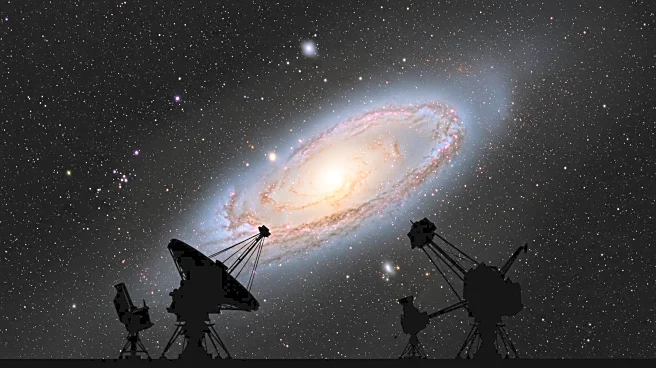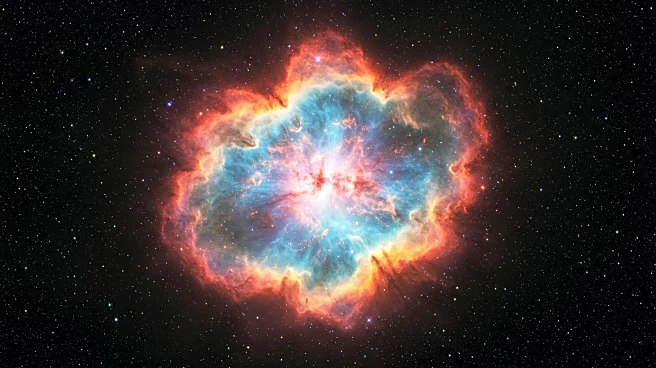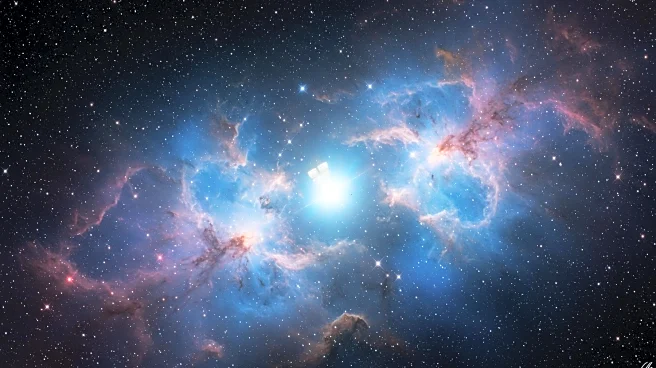What's Happening?
Astronomers have reexamined the distant cosmic object known as Earendel, initially identified as the most distant star ever discovered, located 12.9 billion light-years away. New research using data from the Webb telescope suggests that Earendel may not be a single star but rather a star cluster. The initial discovery was made using gravitational lensing, which magnified the light from the object. Follow-up observations revealed features consistent with globular clusters, leading researchers to question the object's true nature. The study, published in The Astrophysical Journal Letters, indicates that Earendel's apparent size and brightness might have been distorted by gravitational lensing.
Why It's Important?
The reevaluation of Earendel's identity has significant implications for our understanding of cosmic phenomena and the methods used to study distant objects. If Earendel is indeed a star cluster, it challenges previous assumptions about the formation and characteristics of the earliest stars in the universe. This discovery could impact the way astronomers interpret data from gravitational lensing and influence future research on distant cosmic objects. Understanding the true nature of Earendel is crucial for refining models of star formation and evolution in the early universe.
What's Next?
Researchers plan to conduct further observations to confirm Earendel's identity, focusing on its light fluctuations and potential companion stars. These studies aim to determine whether Earendel is a single star or a cluster, which will help clarify its role in cosmic history. Continued analysis using advanced telescopes like Webb will provide deeper insights into the object's characteristics and contribute to the broader understanding of star formation in the universe.
